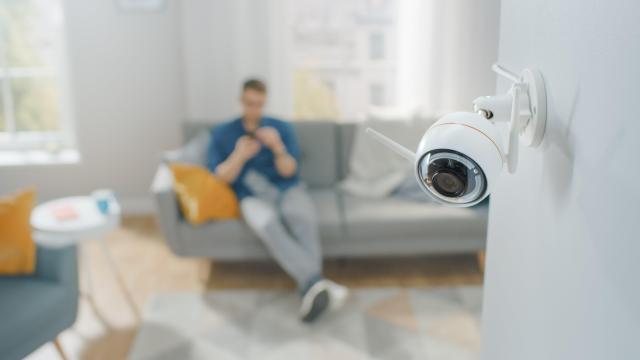Home security cameras were once rare comforts for people with considerable means, but these days, many of us can have them. There’s a difference, though, between owning something useful and really utilising something useful — and if you’re not pointing those cameras toward the right spots, you’re not getting the best security bang for your buck. Here’s where you should (and shouldn’t) put security cameras in and around your home.
Do point one at your front door
If you live in a home you own, put a camera outside and point it at your front door. Burglars aren’t always as stealthy as crime dramas make them seem; in fact, 34% of them go through the front door, not a window or side entrance, according to the International Association of Certified Home Inspectors. A front door view also helps you out in the event of package theft.
If you live in an apartment or rent from someone, chat with your landlord about the security camera placement around the property and push for a front door option if they don’t have one there. The only downside to this placement is if you have alerts set up to notify you whenever someone is visible to the camera, you’ll get pinged every time you get a visitor or a package dropped off — but that’s probably a small price to pay for security.
Don’t put them out of sight
You might think hiding your cameras is a good idea, since you’ll catch potential wrong-doers in the act stealthily, but research has shown that if those would-be criminals see your cameras or alarm system at all, they simply might not commit the bad act in the first place. Not dealing with a crime at all is certainly preferable to getting justice for one.
According to Burglar Free Zone, you want your cameras visible and situated about seven feet up or more, pointing down at an angle. This will help you get facial images and keep the cameras out of reach of most people, so they’ll have a harder time just ripping them down.
Do have them around the first floor
The vast majority of break-ins begin on the first floor, so this is where you need your cameras. The front door is most important to watch, but don’t forget your side entrances, back door, and garage. The NACHI stats say 22% of the break-ins happen through the back door.
Don’t put them in private spaces
Don’t put cameras in your bathrooms or bedrooms, even if you store valuables in there. Guests will be really uncomfortable with this invasion of privacy, as will family members. You’ll end up making an accidental sex tape. Just don’t do it.
Instead, Security.org says you should put your cameras in the interior hallways leading to these locations. That will be enough to monitor those areas without getting weird about it. Consider, too, storing valuables outside of bedrooms and bathrooms — maybe in the den or in a locked armoire in the hallway. This can help you keep cameras and possible thieves out of your bedroom.
Do place cameras in common areas
Security.org also recommends putting cameras in your common areas, like living rooms and kitchens. This can help you keep an eye on any intruders, as well as on kids, pets, or other guests.
Keep in mind that windows and mirrors can cause glares in your camera, so you should check the feed on your phone at points throughout the day when you first get it, and make any adjustments necessary so there is no period of time when the camera is useless.
Don’t point the camera at your neighbours (or do anything illegal)
Here’s our guide on how to avoid breaking any laws when installing your cameras, but basically, don’t point them anywhere someone else might have a reasonable expectation of privacy: Don’t point your outdoor camera in such a way that it captures a neighbour’s window, for instance.

Leave a Reply
You must be logged in to post a comment.